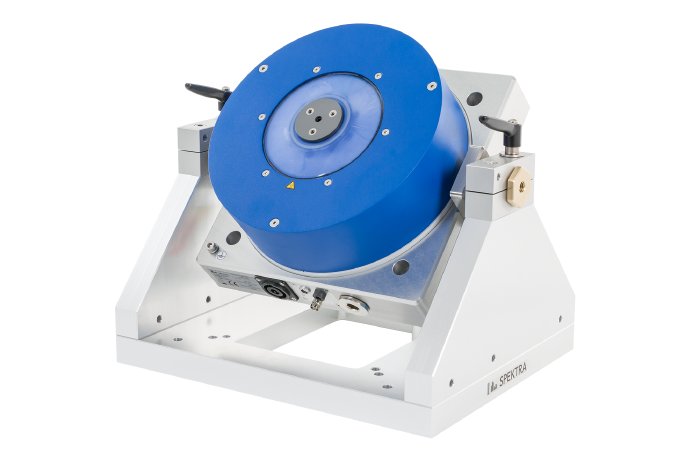One of the standout features of the SPEKTRA SE-29 is its ability to operate in a wide temperature range, from -20 °C up to +80 °C, making it suited for use in climate chambers. For extreme temperature conditions, the SE-29T version allows operation in temperatures ranging from -40 °C to +120 °C.
Key features that set the SE-29 apart
- Wide frequency range (3 Hz to 50 kHz)
- Higher payload capability, accommodating large sensors or geophones up to 2 kg
- Operation in a wide temperature range (-20 °C to +80 °C)
- Versatile vertical and horizontal operation using the new trunnion base
- Exceptionally low transverse motion (< 5 %)
- Reduced stray magnetic field (< 3 mT) for precise calibration of magnetic field-sensitive sensors
Attention to detail - Available options and accessories:
To further enhance its capabilities, the SPEKTRA SE-29 offers five interesting options:
DUT Mounting: The entire armature of the vibration exciter can be used to mount devices under test (DUT), while the reference accelerometer inside the armature measures the actual motion. This option is especially valuable for sensor development, environmental testing, and sensor characterization.
Temperature Option: With an extended temperature range of -40°C to +120°C and no need for compressed air supply or a zero-position controller, the SE-29 becomes suitable for use inside a climate chamber. The internal reference accelerometer with a low temperature coefficient ensures precise control of the vibration exciter’s movement even in demanding environments.
Integrated Temperature Sensor: An integrated temperature sensor measures the temperature of the vibration exciter’s armature – and thus can monitor DUT, reference standard, and exciter simultaneously. Additionally, active cooling of the coil is possible using a standard fan connected to an air inlet in the base plate of the exciter, to prevent overheating.
Optional Trunnion Base: The trunnion base allows flexible vertical and horizontal operation, making it ideal for testing and calibrating various types of sensors.
Laser Vibrometer Compatibility: In combination with a laser vibrometer, the SE-29 can be used for primary calibration of vibration sensors according to ISO 16063-11 or other specialized tests requiring precise vibration measurements.
Praise from first customers
Dr. Christian Hof, Head of Acoustics and Vibration Labs at Eidgenössisches Institut für Metrologie METAS, expresses his enthusiasm for the SE-29: "In initial measurements, the new SE-29 high-frequency vibration exciter from SPEKTRA has proven that a robust spring-loaded exciter can provide quality mechanical vibration, which previously had been achieved only with air-bearing calibration exciters." This commendation from a national metrology institute emphasizes the SE-29’s superior mechanical vibration capabilities.
Versatile applications
The SPEKTRA SE-29 exciter finds application in various scenarios, including:
- Device testing and sensor characterization
- Vibration tests of small-scale devices
- Calibration of vibration sensors according to ISO 16063-11 and ISO 16063-21
- Modal and structural testing
- End-of-line testing
For more information or inquiries about our exciters and solutions, please contact our expert team at sales@spektra-dresden.com

